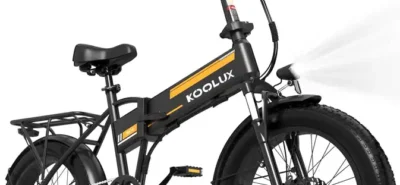Electric Bike Laws in the UK: What You Need to Know
Electric bikes, or e-bikes, have become increasingly popular in the United Kingdom as people seek more sustainable and efficient ways to commute and enjoy leisure rides. However, as with any mode of transportation, it’s essential to be aware of the regulations and laws governing electric bikes in the UK. In this article, we’ll delve into the key rules and requirements you should know when riding an electric bike in the UK.
What is an Electric Bike?
First and foremost, let’s clarify what constitutes an electric bike. In the UK, electric bikes are legally classified as Electrically Assisted Pedal Cycles (EAPCs). These are bicycles equipped with a motor that provides assistance to the rider, but the primary means of propulsion are still the pedals. EAPCs are not considered motor vehicles, which means they are subject to specific regulations.
Power and Speed Limits
Electric bikes in the UK are subject to power and speed restrictions to ensure safety. Here are the key limits you should be aware of:
- 250-Watt Motor: EAPCs can have an electric motor with a maximum power output of 250 watts.
- 15.5 mph (25 km/h) Speed Limit: The electric assistance on an e-bike must cut off when the bike reaches a speed of 15.5 mph (25 km/h).
Age Restrictions
Riders of electric bikes must meet certain age requirements. In the UK, you must be at least 14 years old to legally ride an electric bike. This rule applies to both purchasing and operating e-bikes.
Licensing and Helmets
One of the advantages of electric bikes in the UK is that you do not need a license to operate them. However, it is recommended that you wear a helmet for safety. Although not mandatory for adults, it is legally required for riders under 18.
Insurance and Taxes
E-bike users are not required to have insurance, and electric bikes are exempt from vehicle tax in the UK. This makes them a cost-effective and convenient mode of transportation.
Where You Can Ride
In the UK, electric bikes can generally be used on public roads and cycle paths. However, there are some restrictions:
- E-bikes are not allowed on sidewalks (pavements) unless they have a separate lane for cyclists.
- E-bikes cannot be used on motorways or in restricted areas where only authorized vehicles are permitted.
- Electric mountain bikes (eMTBs) can be used on designated off-road trails, but it’s essential to follow local regulations and guidelines for these areas.
Maintenance and Safety
Regular maintenance of your electric bike is crucial to ensure it operates safely and efficiently. You should check the brakes, tires, lights, and other components regularly. It’s also advisable to have your e-bike serviced by a professional to address any issues.
Additionally, when riding, always be mindful of other road users, pedestrians, and follow the rules of the road. Obey traffic signals and signs and be considerate to other cyclists and drivers.
Conclusion
Electric bikes offer an eco-friendly and convenient way to get around in the UK, but it’s essential to be aware of the laws and regulations that apply to them. Understanding the rules regarding power, speed, age restrictions, and where you can ride will help you enjoy your electric bike safely and responsibly. By adhering to these guidelines, you can experience the many benefits of e-bike transportation in compliance with UK law.
Remember that laws and regulations may evolve, so it’s a good idea to stay updated on any changes that may affect electric bike usage in the UK. Always prioritize safety and responsible riding to make the most of your e-biking experience.
This article provides an overview of the key laws and regulations surrounding electric bikes in the UK, helping riders understand their rights and responsibilities while enjoying the benefits of this eco-friendly mode of transportation.











